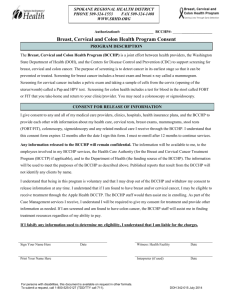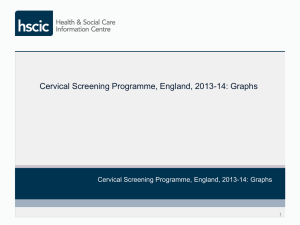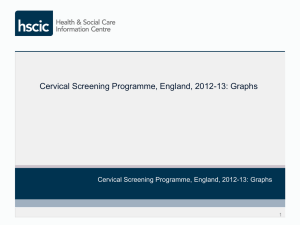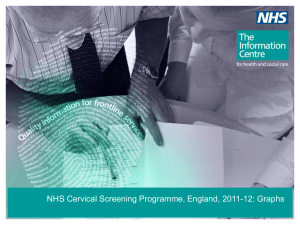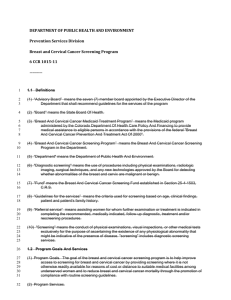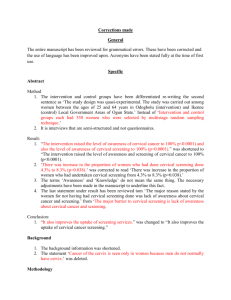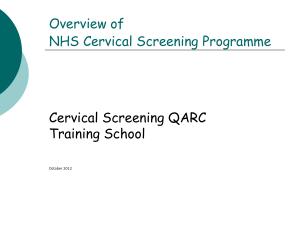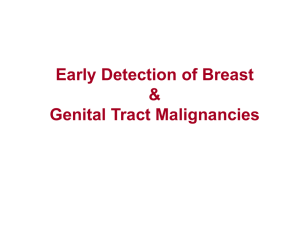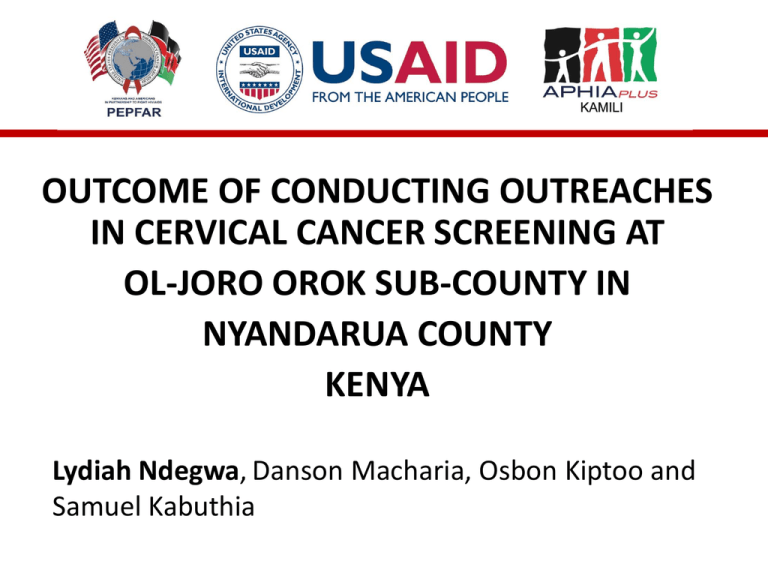
OUTCOME OF CONDUCTING OUTREACHES
IN CERVICAL CANCER SCREENING AT
OL-JORO OROK SUB-COUNTY IN
NYANDARUA COUNTY
KENYA
Lydiah Ndegwa, Danson Macharia, Osbon Kiptoo and
Samuel Kabuthia
Background
• Cervical cancer continues to be a major cause of morbidity in
women of reproductive age (WRA) with 500,000 cases
reported worldwide. The incidence of cervical cancer is five
times higher in people with HIV. Globally cancer of the cervix
is the number two cause of cancers in women after cancer of
breast and in the third world countries its ranked number one
with prevalence of 25 per 100,000 WRA. In Ol-joro orok sub
county outreaches were introduced in 2014 with 38 with
confirmed suspicious cases out of 874 women screened
(4.3%).
OBJECTIVE
• To increase the number of cancer of
the cervix screenings in Ol-joro orok
Sub County subsequently link and
increase the follow up rates for
cancer suspect cases for care and
treatment.
METHODS
• Mobilization was done using daily health talks,
posters, one - one by clinician at the consultation
rooms and through going round with health
wagon. Screening was done using visual methods
during the outreaches. Clients with VIA/VILI
positive were referred to the gynecologist and
those with positive lesion were done cryotherapy.
A support group was established for clients with
confirmed lesions for continued education and
support.
RESULTS
• 874WRA were screened, among whom 6 were
HIV positive, 490 were negative, 378 were of
unknown status and 1 had breast lump.
38(4.3%) VIA/VILI positive and 10 (1.1%) with
positive lesion were referred to the
gynecologist for cryotherapy and the rest were
rescheduled.
OL-JORO OROK SUB COUNTY IN - REACHES YEAR 2014
Facility
Dates
Via Villi
Via Villi
Number of
total
Number
Breast
attendances positive examinations
Breast
Lamps
detected
Cervicitis
No.
counseled
for HIV
No. tested No. positive No.
for HIV
for HIV referred
Gatimu
20-2-2014
74
4
74
0
4
110
42
0
4
Gatimu
29-9-2014
66
2
66
0
1
54
33
1
2
Chamuka
19-9-2014
85
5
85
0
9
52
52
1
5
Chamuka
20-9-2014
85
5
85
0
9
52
52
1
5
Ol-bolosat
25-4-2014
72
1
72
1
4
96
44
0
1
Huho-ini
25-9-2014
65
3
65
0
2
112
53
1
3
Maina & Mwangi
15-5-2014
47
5
47
0
1
105
57
0
5
Silibwet
26-9-2014
89
5
85
0
7
63
60
2
5
Silibwet
8-10-2014
75
5
75
0
8
110
2
0
5
Kasuku
20-3-2014
45
0
45
0
3
22
19
0
0
Kasuku
19-6-2014
92
2
92
0
5
100
44
0
2
874
38
870
1
55
936
490
6
38
Totals
Health education before screening.
During mobilization.
CONCLUSIONS
• Routine screening enabled early intervention
before progression of precancerous lesions
hence reducing morbidity and mortality
associated with cervical cancer. Cervical
cancer screening using visual methods is
therefore a cost effective method.
CHALLENGES
1. Elderly women declining screening due to age
difference.
2. Fear of results associating cervical cancer with
active sex life.
3. If screening were performed by male clinicians
RECOMMENDATIONS
• More health education especially to those
declining screening.
• To be done routinely may be quarterly.
ACKNOWLEDGEMENT
1. APHIA PLUS KAMILI for their support during
outreaches.
2. County and Sub County health management
team.
3. Health staff who were present during
outreaches.
THANK YOU

